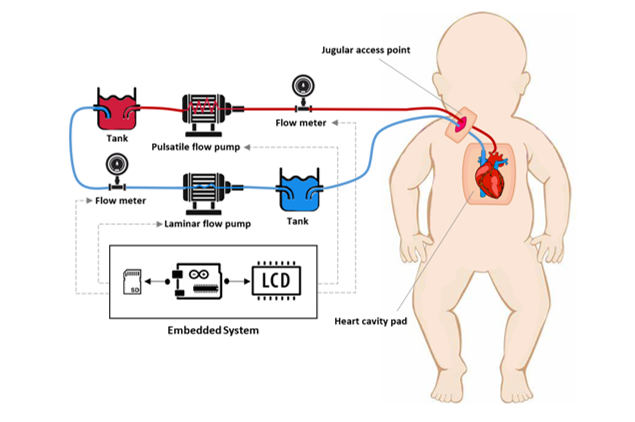According to the information collected by the team on the system’s expectations and requirements, and considering the client’s suggestions, the team decided to design two different simulators. One simulator for pediatric patients and another one for neonatal. Pediatric simulator should be designed with two cannulation access points, jugular cannulation, and femoral cannulation access. One cannulation access point should be designed for the neonatal simulator, which is the jugular cannulation access point. Both simulators should allow VV and VA cannulation methods for all designed access points. In this project, the team will focus on designing the neonate simulator, where the pediatric simulator will be a downsized version of the adult simulator that the previous ECMO team designed, in terms of the overall structure but with different dimensions. The proposed design of the neonatal ECMO cannulation simulator can be observed from the figure below.

A brief description of the components presented in the above figure:
- Cannulation Sites: flesh-like material placed inside the mannequin to represent the jugular and the heart cavity.
- Pulsatile Flow Pump: aiding the simulation of blood flow through the artery.
- Laminar Flow Pump: aiding the simulation of blood flow through the veins.
- Tanks: acting like a resistor in the electrical circuits to protect the power source, which is in this case the two pumps.
- Flow Meters: measuring the simulated blood flow through the system.
- Embedded System: controlling the electrical parts of the system.